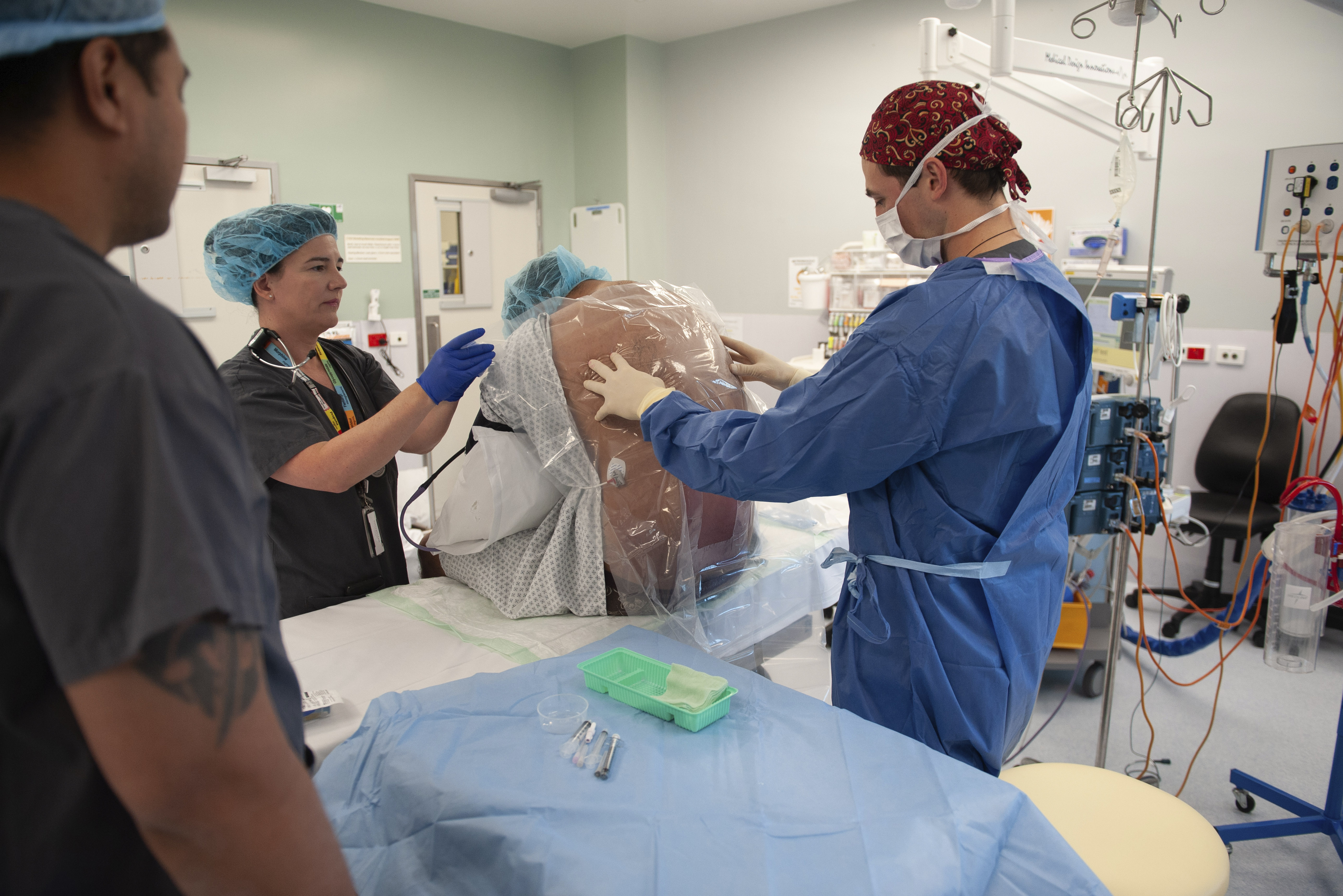
Counties Manukau Health offers a fantastic 12-month regional anaesthesia fellowship. Over the course of the year you will gain substantial proficiency and confidence in a wide repertoire of peripheral nerve blocks. You are looked after by the Regional Anaesthesia Special Interest Group (SIG), comprising of a core group of specialist anaesthetists who have a passion for regional anaesthesia.
The regional anaesthesia fellow will be rostered according to a template set out by the Regional SIG and the weekly roster writers will ensure that you are assigned to specific block friendly lists outlined in the template. You can expect to have regular acute and elective orthopaedic and vascular lists to maximise your exposure to nerve blocks. You will have the opportunity to follow post-surgical patients up by participating in the acute pain round with the pain team. The rostering is flexible and you may modify the template as your year progresses in collaboration with your supervisors. There is a broad range of non-clinical opportunities available to suit your needs and interests.
The regional anaesthesia fellowship offers a wide variety of options for non-clinical work - great for CV building and getting involved in the department.
You will have opportunities to be involved in teaching. This includes scheduled teaching sessions for the departmental senior house officers and registrars, as well as formal courses such as the CRACC course (Counties Regional Anaesthesia Cadaver Course), Auckland Part Two short and long course teaching and regional anatomy workshops at national and international meetings.
Counties Manukau Health provides a generous CME grant which allows you to attend international meetings to learn and discuss with world-leading experts in the field. Of particular relevance would be the ASRA (American Society of Regional Anaesthesia) and/or ESRA (European Society of Regional Anaesthesia) annual congresses. You may also like to participate in Australasian cadaver / regional anaesthesia workshops such as the ARACUS course (held annually in Perth).
Research projects are encouraged and the Regional SIG contains a number of anaesthetists who are actively involved in and enthusiastic about research. The Regional SIG and Research office can help you get your project off the ground. Because of the time it takes to see through ethics and locality approval, we suggest getting a head start so that you can complete your project during your fellowship.
To maximise your year at Counties Manukau Health, your supervisors from the Regional SIG will get in touch early (October/November prior to December start date) to help proactively plan your year and customise the fellowship to your interests and goals. Over the course of the year you will meet up regularly with your Supervisor of Training to ensure you are meeting targets and getting what you need from the year. You will also take an active role within the Regional SIG and will be invited to the SIG meetings which take place both in and out of hours.
Approximately 1/3 of the time, you will be assigned to a theatre list with a consultant and the other days you will have a list/acutes to run on your own or with a trainee. This presents an excellent opportunity to teach and pass on your skills to the next generation of anaesthetists.
Overseen by our regional special interest group (SIG) and a wider group of skilled regional practitioners, our Regional Fellowship offers an exceptional experience in provision of regional techniques for our surgical population.
Our fellows can expect:
Last modified: